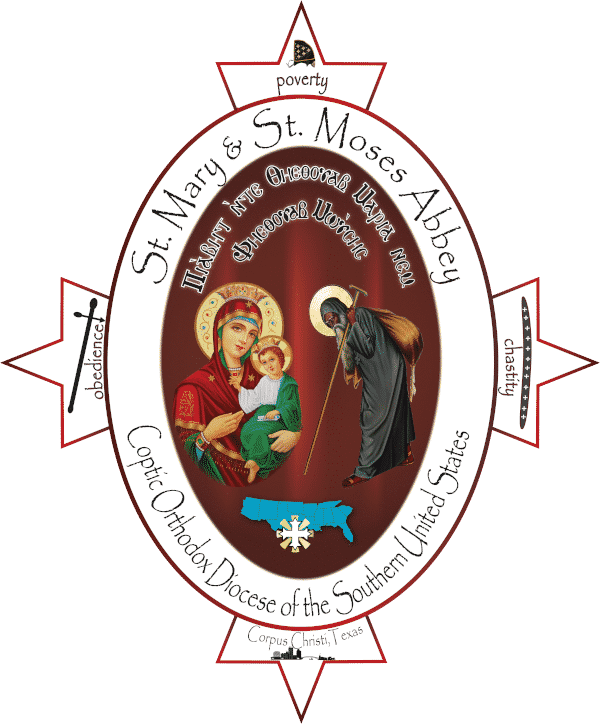History
On a day like today in the late 4th century an ordinary man walked into church and just then it happened that the Gospel was being read, and he heard the Lord saying to the rich man,
“If you want to be perfect, go, sell what you have and give to the poor, and you will have treasure in heaven…” (Matt. 19:21)
Today that ordinary man is known as St. Anthony the Great, the Father of Monasticism and he was a Coptic Orthodox Christian.

St. Mary & St. Moses Abbey is a monastery of the Coptic Orthodox Diocese of the Southern United States and its history began more than 1600 years ago when St. Anthony accepted the role of a spiritual guide to hundreds of monks, thus founding the monastic life. The Abbey has continued this way of life under the spiritual guidance of His Grace Bishop Youssef, Bishop of the Coptic Orthodox Diocese of the Southern United States and Abbot of St. Mary & St. Moses Abbey.
The land on which the Abbey is built was originally founded by the Roman Catholic Church in 1927 as a theological school and faculty residence. In 1961, Pope John XXIII elevated the establishment’s status to that of an Abbey naming it the “Corpus Christi Abbey and Benedictine Retreat Center” in which monastic vocations were accepted and fulfilled. For the next four decades the Abbey would be a place of refuge and retreat for its monks, those they served and the surrounding communities at large.
At the turn of the millennium, with no new vocations to revive its monastic life, there remained only three monks living on the 92 acres of land, who struggled to sustain the Abbey and take care of its many responsibilities for several years. Finally, to the disappointment of the monks, the Roman Catholic Church was forced to put the property up for sale and so the monks began searching for a suitable buyer; their only wish-for it to remain a monastery.
In early 2005, searching for land to form a retreat center for the diocese, H.G. Bishop Youssef along with Rev. Father Athanasius Kaladas and V. Rev. Father Bishoy George visited the Abbey for the first time. At first impression, Bishop Youssef loved the property, but told the accompanying fathers that it was incapable of being a retreat center due to its location. “It’s only function” said His Grace, “is for it to remain as it is, a monastery” a thought that he had not entertained until that moment.
By the providence of God, that passing thought became a reality, and in March 2005 the Coptic Orthodox Diocese of the Southern United States purchased the Abbey and renamed it the “St. Mary & St. Moses Abbey” in honor of the Mother of God St. Mary and St. Moses the Strong, a monastic father known most for his profound life of repentance.
Shortly after the purchase of the property, Bishop Youssef brought five monks from St. Mary El-Sourian Monastery of the Wilderness of Scetis – Natroun Valley, Egypt to begin the monastic life. A few months later the Holy Synod accredited the monastery making it the second Coptic Orthodox Monastery in North America together with St. Anthony Monastery in Newberry Springs, California. On August 20, 2005, His Holiness Pope Shenouda III, Pope and Patriarch of the Coptic Orthodox Church, laid the cornerstone of the monastery and consecrated the altar of its’ largest church in the name of the Mother of God, St. Mary. Through the grace of God the monastery was now planted and watered. As visitors and retreats came from all over the United States, Canada and as far as France and Australia, they saw the monastery grow rapidly to be the home for more than twenty monks and novices in the first six years.
“Thanks be to God for His indescribable gift!” (2 Corinthians 9:15)
St. Mary & St. Moses Abbey
“If anyone will not work, neither shall he eat.” (2 Thess. 3:10)The labor of the monk is also very spiritually beneficial to ward off the idle and sinful thoughts of the demons, for as the fathers teach us,
“An idol mind is the devil’s playground, and idle hands are his tools.”Usually resting for another quarter of their day, the remainder of the monk’s day is spent in individual prayer, reading, contemplation, and the necessities of life as they strive to continuously live in the presence of God.
